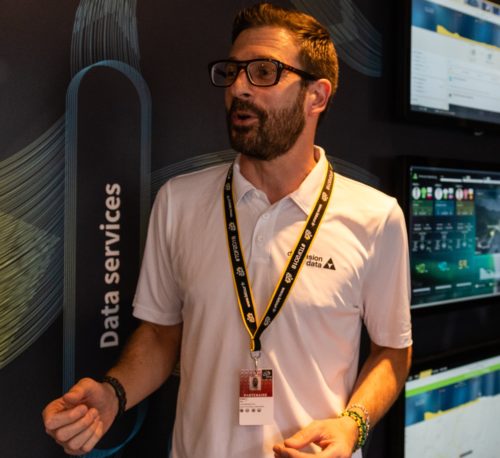
Sports world record breaking: a feat of endurance for human beings, machines – and technology
3 min read
With sporting world records becoming harder to break, Tim Wade explains how Dimension Data and Cisco Meraki are helping bring down the boundaries as James MacDonald’s indoor cycling world record attempt reaches the home strait.

Dimension Data’s Tim Wade
Every second counts
As June 22nd fast approaches, James MacDonald’s 24-hour non-stop indoor cycling world record attempt at the Geraint Thomas National Velodrome of Wales exemplifies what can be achieved by one person on a bike.
Man, and machine, you could say.
It’s also a reminder that elite endurance sport has become an exact science; one small change to diet, training regime or a single ounce variation in weight can mark the difference between victory and 4th place.
With sports people pushing themselves to the limit, it’s almost impossible to break world records without additional help. That’s where technology comes into play, supporting athletes like James as they push ever harder to achieve what was previously impossible.
Point break
And that’s why James’ recent 18-hour test run at the velodrome was such a vital part of the Project Kansas support team’s preparations. With the technology 85-90% up and running, the day allowed us to test it ahead of 22nd June – alongside James and his new bike.
Taking components designed for road racing plus others developed for indoor events, our layered solution has been relatively easily adapted for an indoor velodrome environment to monitor James as he moves around the track.
Dimension Data’s 3D positioning and sensor data capture gateways placed at inner and outer edges of the track will let us keep tabs on his exact location to within 5cm and capture data from his heart rate, speed, cadence and power sensors while he is riding. Custom algorithms have been developed to enable the support team to understand how many calories he has burnt, whether he is trending in an upward or downward trajectory and how far he has ridden.
By visualising all these insights on a dashboard, we’ll be feeding this information into his performance throughout the day.
It’s also crucial that we have continual access to data about James, from fuel intake to heart rate and calorific burn. For this, we’ve fitted off-the-shelf sensors to his bike.
All we need to do now is add some new code and complete a laser study to establish the exact location of the data capture gateways. By doing so, we can create a 3D model that will map James throughout his 24-hour journey with maximum accurately.
This combination of location and sensory information will help us make informed decisions as he takes on this gargantuan challenge,
Bringing the outdoors in
Last but definitely not least, Cisco Meraki Wi-Fi offers the perfect solution for the velodrome, which is located at Newport Live, a huge complex that also houses multiple sports halls and a swimming pool.
Meraki can also be used to capture insights on how people navigate the velodrome, offering physical security to the venue, while Meraki Proximity’s power to ‘see’ people as they move around is so powerful it can even detect individuals and devices on local buses as they drive past!
Knowing how visitors engage with the space has wider implications too, as this can be used in understanding and planning how best to set up events, fitness equipment placement strategy and future general space planning.
Staying power
It’s great to be supporting James as he endures one of the greatest challenges of his life.
And what makes this project doubly special is that it unlike Dimension Data’s other cycling projects – Tour de France, Tour de Yorkshire and Madison – the technology will stay in place, making Newport home to one of the world’s most technically advanced digital velodromes.
Cycling teams from around the globe can benefit from this incredible facility, with international coaches able to remotely observe their cyclists and communicate with them via Cisco Webex from any location. It can also help experts review and track cycling’s long-term strategy, with a view to breaking further world records.
It’s not just for the professionals though; keen amateurs will also have access to the velodrome technology via an app, making cycling both accessible and potentially bigger and better than ever before.
And with this fusion of human being, machine and technology, on 22nd June, we’ll be helping take indoor cycling to the next level of innovation.
2 Comments

Go James Go
A piece of cake compared to joglejog
We know you can do it
Good luck
Knowlesy